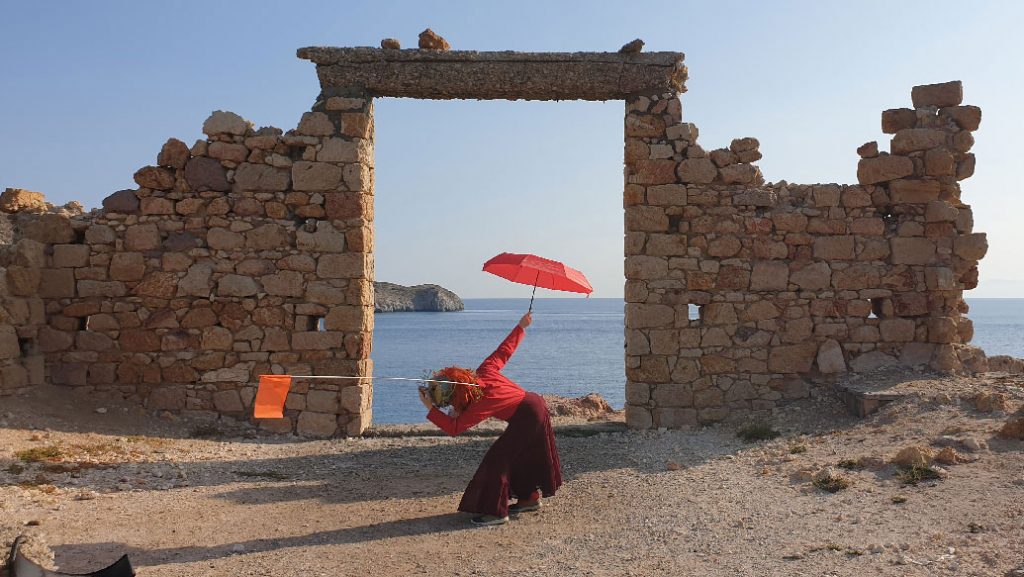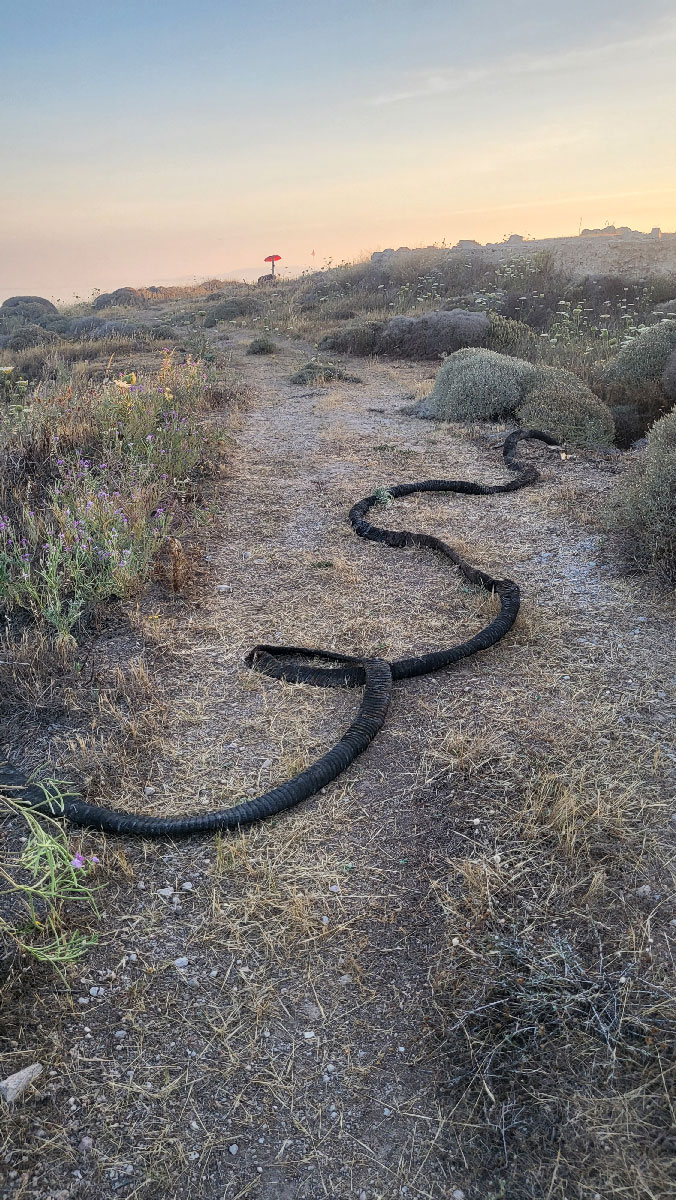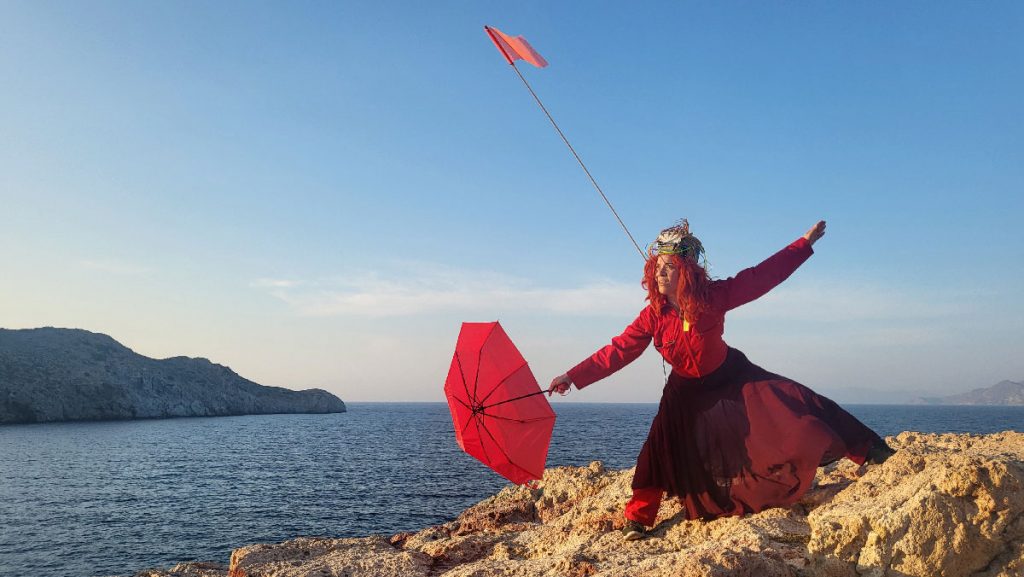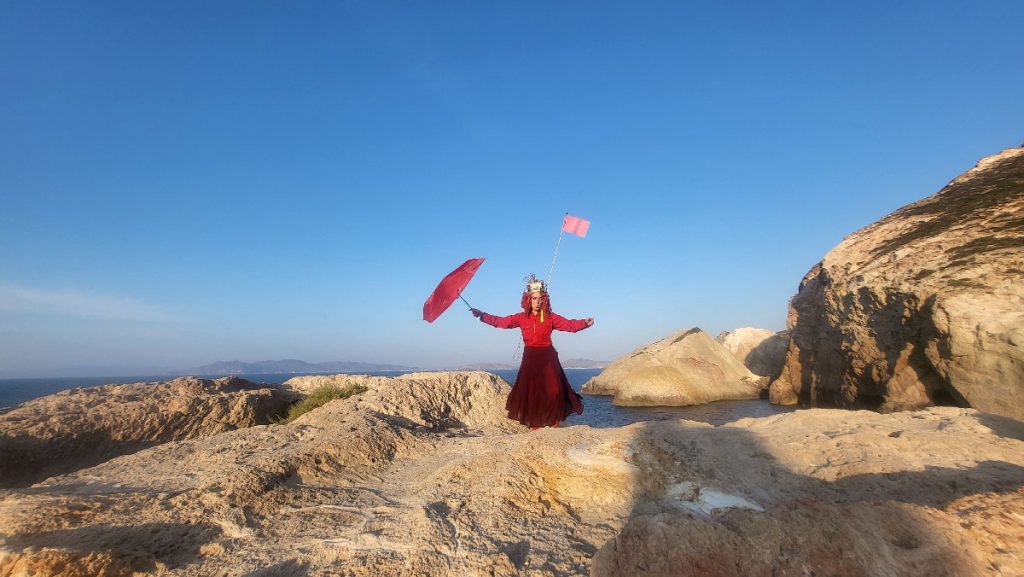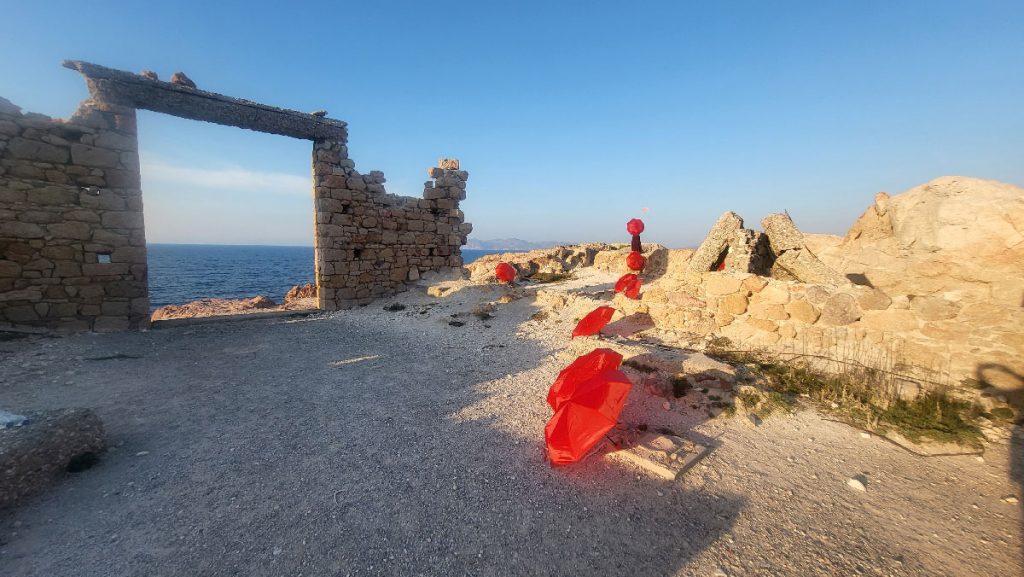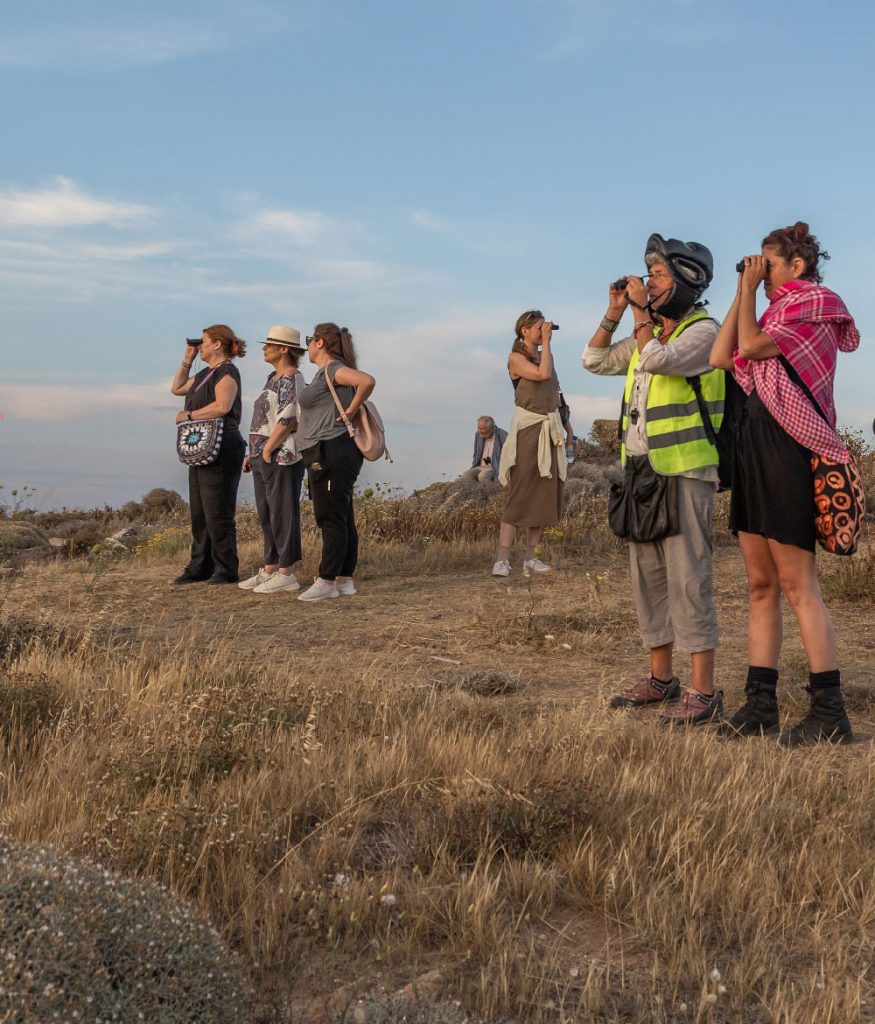Manousos Xidous, looking into the distance here, is the oldest of our performers, who remembers exactly how he grew up on this island without shoes and how German soldiers were taken prisoner of war from the bunker on which he is standing. He sings old songs and we look into the setting sun with the certain feeling that this is a beginning, a reinterpretation of landscape with the means of theatre.
Because landscape is not a backdrop, it cannot be ignored, it does not need mimes, nor does it need amplifiers, wind machines, light stands or sound engineers. It needs interventions. Interventions in what has intervened in the landscape. Some, like Giorgos Petrarkis, an employee of the Imery Group, who accompanied us for a long time, believe in man-made re-naturalisation. He is paid by his company for this cultural achievement.
I, however, believe that landscape always tells of what happens to it. And that it takes a choreography of gazes to recognise how much we can describe precisely this dilemma with the means of art out of fear, romantic longing and the obsessive desire to incorporate a place. Landscape theatre does not naively worship nature, because otherwise it would be nature theatre. Landscape theatre is the cultural form that serves to reflect our own culture.
